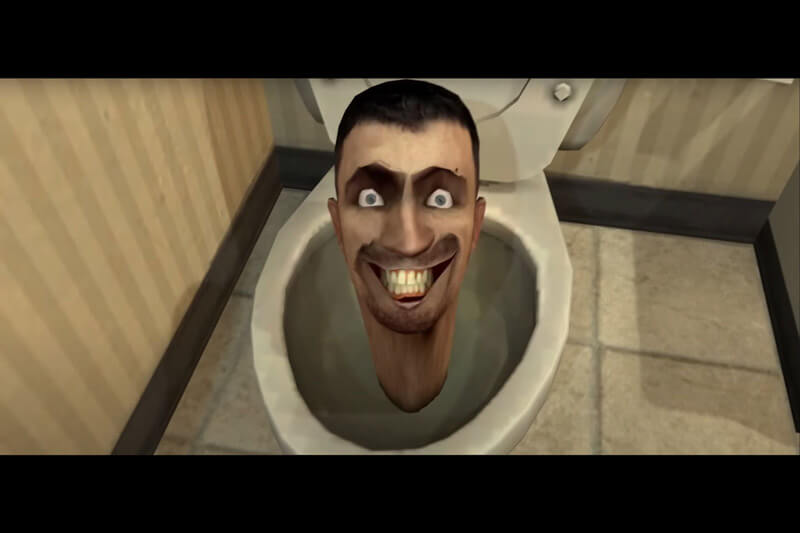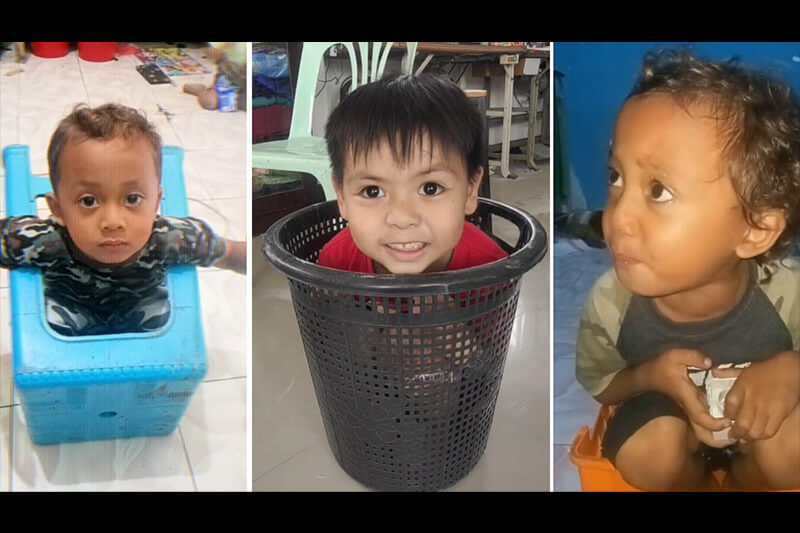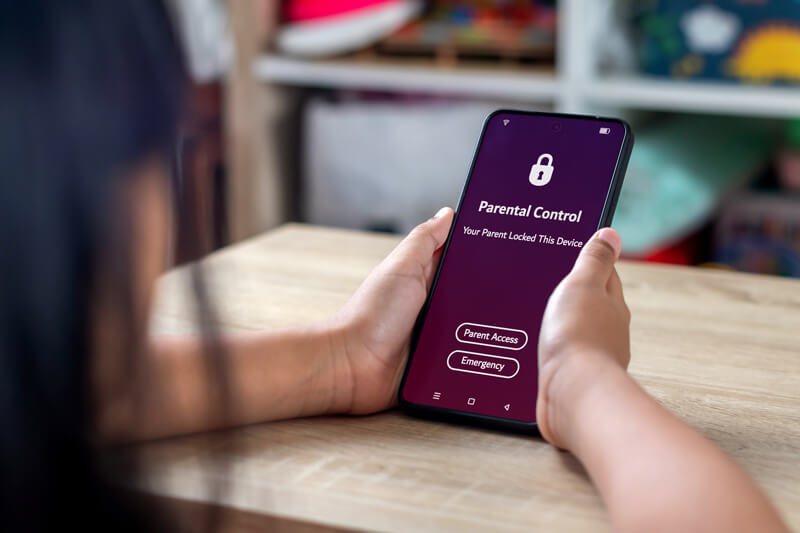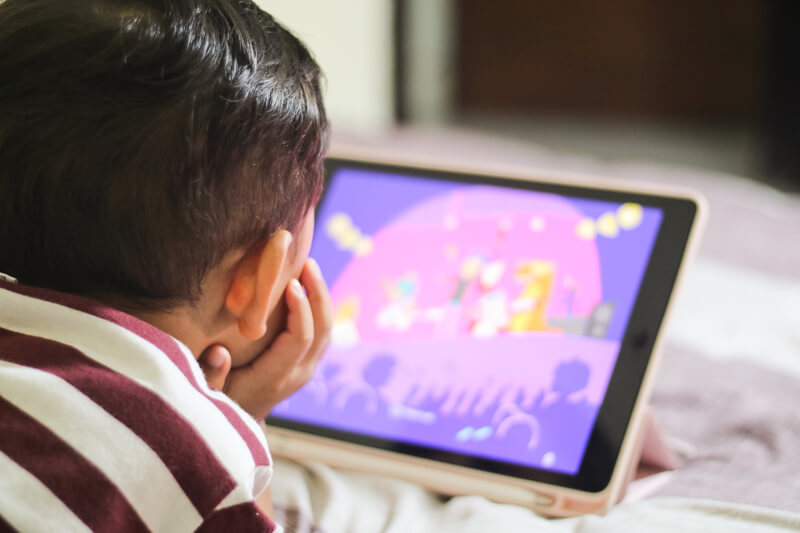You’ve probably seen this disturbing and downright horrifying trend making its rounds amongst Gen Alpha. Your own kids may be suffering from this ‘virtual epidemic’ of surreal internet content.
One day your kids are fine, the next they’re singing ‘Skibidi, skibidi bop— Bop, bop, bop, bop. Yes, yes, yes, yes‘, and talking to their toilets.
One minute they’re playing with their toys, then they’re going into baskets, boxes and buckets with their heads popping out pretending to be the titular characters of the popular Youtube series.
The internet is calling this phenomenon, Skibidi Toilet Syndrome, and this is what you should know as parents.
What Is Skibidi Toilet Syndrome?
You might be scratching your head at the term “Skibidi Toilet Syndrome,” and you wouldn’t be alone.
The term itself is based on a Youtube series called Skibidi Toilet created by Georgian animator Alexey Gerasimov, known by his YouTube channel, DaFuq!?Boom!)
It is set in a bizarre, postapocalyptic world dominated by singing toilets with human heads who battle humanoids with electronic-device heads.
The “syndrome” isn’t a recognised medical condition. It’s more of a label used when children exhibit odd behaviours after heavy exposure to this content.
So what exactly are we talking about?
The term describes the phenomenon of kids becoming fascinated, pre-occupied or possibly a bit unhinged by the imagery, songs and repetitive loops of the show.
Why Is Skibidi Toilet Content a Concern for Kids?
It’s understandable why this one raises eyebrows.
The visual style of The Skibidi Toilet is absurd, even unsettling for younger children: toilets with human heads, abrupt animations, choppy movements.
Just see for yourself why many parents are concerned about this trend:
@dafuqboom657 skibidi toilet – season 1 (all episodes)
Some children, especially boys, are drawn in by the catchy tune and bizarre antics. After all, most kids these days are easily entertained by overstimulating content.
At the same time, commentators warn its aesthetic and themes may be too strange for early viewers.
Plus, the algorithmic nature of platforms means one weird clip could easily lead to another, and before you know it, screen-time ticks up, other activities drop off and you’ve got a mini Skibidi devotee on your hands.
Potential Effects on Children’s Behaviour and Mental Health
Let’s be clear: there’s no formal diagnosis for “Skibidi Toilet Syndrome” and no solid evidence it causes permanent harm.
But parent-communities and digital-safety sites report certain patterns worth noting:
- Kids mimicking characters, sitting in odd places or acting out scenes.
- Becoming fixated and asking for the show repeatedly, humming songs, or growing visibly upset when the device is taken away.
- Neglecting other interests or hobbies, potentially reducing physical play or social interaction.
These may point to excessive screen exposure, rather than this specific show alone. Which brings us to the practical bit.
How to Protect Your Kids from Skibidi Toilet Content
Here’s the good news: you’ve got more control than it might feel. Remember, at the end of the day this is for your child’s own online safety.
Set screen-time limits and establish device-free zones (especially at bedtime).
Use app or platform restrictions (for example, disable autoplay, block certain channels).
Preview content yourself. If something makes you uneasy, trust your instinct. Many sites advise parents to watch an episode first.
Encourage a healthy balance. Offline play, books, outdoor time. The stranger the digital snack, the more important the balanced meal of real-world play.
Keep the conversation open. Ask what your child likes about the videos, what they find funny or scary. You’ll learn more about how they’re interpreting what they see.
How to Talk to Kids About Harmful Online Trends
Let’s ditch the lecture tone, it rarely works. Instead, have a proper conversation and treat them like adults.
Sit down together and ask them about it “Hey, I saw a clip of that toilet show you laughed about. What did you like about it?”
Don’t be an outright party-pooper from the get-go. Start by acknowledging what’s fun: weird songs and characters can be silly and harmless.
But then, point out the difference between fantasy and real life: “That toilet man wouldn’t happen in our house.”
Set boundaries calmly: “We’ll watch together, and when it’s time we’ll switch to something else.”
Empower them and teach them to choose their own content wisely and remind them ask you before watching something new.
FAQs About Skibidi Toilet Syndrome
How do I know if my child has Skibidi Toilet Syndrome?
While not a recognised medical condition, there are ways you can tell if your child has become obsessed with the disturbing Youtube series. Look out for:
- Repeated requests for that show or similar content
- Mimicking the visuals (e.g., sitting in strange containers, quoting catch-phrases)
- Becoming upset when the device is taken away or access is restricted
- Losing interest in other play, socialising or outdoor activity
However, it is important that you do not let it get to this point. Always monitor your child’s screen use and internet consumption.
How do I restrict my child’s Youtube access?
There are many ways to enforce greater restriction on your child’s access to Youtube, and other internet or online content too.
Remember, they might also be exposed to the content on other platforms such as social media (Tiktok, Instagram, etc).
Here’s how to protect your kids from content like Skibidi Toilet:
- Use in-built parental controls on devices and apps.
- Enable “Restricted Mode” on YouTube and create a child-profile with supervision.
- Turn off autoplay and consider installing a content-filtering app.
- Have tech-free times (mealtimes, bedtime) and enforce consistent routines.
These steps should ideally be implemented before you even give your child their first taste of the screen.
Unfortunately, many parents skip this step and just give their kids the iPad without a second thought.
How do I ‘treat’ my child for Skibidi Toilet Syndrome if my child already has it?
If you think that your child’s Skibidi Syndrome is starting to affect their life in negative ways, it’s time to intervene.
If they start shouting the soundtrack in public, or reenacting the disturbing scenes at school, you need to have a difficult convo with them.
Ideally, you should not let it get to this point. The first part is to acknowledge that what they’re doing is a problem. But don’t expect them to stop completely.
Avoid harsh punishments but remind them that they are not allowed to engage with the content anymore. But remember to replace it with something else.
Find a more child-friendly programme for them to consume that’s educational but fun (with even catchier music to drown out the haunting Skibidi soundtrack).
When do I consult a professional if my child isn’t recovering from Skibidi Toilet Syndrome?
If you notice persistent behavioural changes, it may be worth talking to your child’s paediatrician or a child-psychologist.
These changes can include anxiety about turning off the screen, refusing other activities entirely, sleep disturbances, etc.
It’s less likely the toilet show itself is the root cause, but rather broader screen-use issues or underlying anxiety that need addressing.
Curing the ‘Epidemic’
The Skibidi Toilet craze might seem absurd (to adults, at least), but for kids it’s just another piece of digital culture they’ll sample, mimic and move on from.
The real challenge isn’t the show itself, it’s how children consume it.
With a gentle approach and clear boundaries, you can help them engage safely with the weird and wonderful world they’re growing up in.
Minus the weird sentient toilets with talking heads.
Disclaimer: The information provided in this article is for informational purposes only and should not be considered as medical advice from Motherhood. For any health-related concerns, it is advisable to consult with a qualified healthcare professional or medical practitioner.
For more insightful stories and fun recipes, stay tuned to Motherhood Story!












